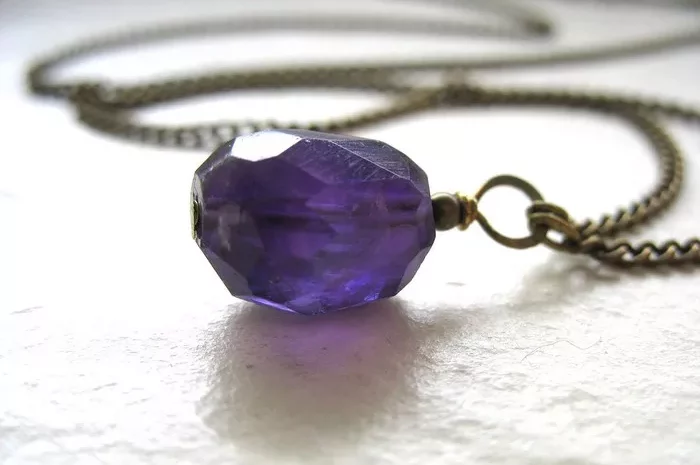Amethyst, with its regal purple hues and captivating beauty, is one of the most popular and widely recognized gemstones in the world. Known for its calming energy and stunning color variations, amethyst has been treasured for centuries by cultures around the globe. However, not all amethysts are created equal, and certain sources are renowned for producing the finest specimens. In this article, we’ll explore where the best amethyst comes from and what sets it apart from other sources.
Introduction to Amethyst
Amethyst is a variety of quartz, a mineral composed of silicon and oxygen atoms arranged in a tetrahedral lattice structure. The distinctive purple color of amethyst is due to the presence of trace amounts of iron within the crystal lattice. The intensity of the purple color can vary widely, ranging from pale lilac to deep violet, with some stones exhibiting zoning or color banding.
The name “amethyst” is derived from the Greek word “amethystos,” which means “not intoxicated.” In ancient times, amethyst was believed to protect against drunkenness and promote sobriety, leading to its association with clarity of mind and spiritual enlightenment. Today, amethyst continues to be prized for its beauty, symbolism, and metaphysical properties.
Factors Affecting Amethyst Quality
Several factors contribute to the quality and value of amethyst, including color, clarity, cut, and carat weight. Let’s take a closer look at each of these factors:
Color: The color of amethyst is the most important factor in determining its quality and value. The most desirable amethysts exhibit a rich, deep purple color with excellent saturation and uniformity. Stones with a pure, intense hue are highly prized and often command premium prices in the market. Amethysts with secondary hues, such as pink or blue, may also be valued depending on the intensity and distribution of the color.
Clarity: Like all gemstones, amethyst can contain internal characteristics known as inclusions. While some inclusions are acceptable and may even enhance the stone’s beauty, high-quality amethysts exhibit excellent clarity and transparency. Eye-clean stones with minimal visible inclusions are more valuable than heavily included specimens.
Cut: The cut of an amethyst can greatly impact its appearance and overall beauty. Well-cut amethysts exhibit optimal proportions, symmetry, and polish, enhancing their sparkle and light performance. Popular cuts for amethysts include round, oval, cushion, and emerald cuts, although other fancy shapes may also be available. A high-quality cut can maximize the stone’s color, minimize any potential color zoning or extinction, and create an attractive play of light within the gemstone.
Carat Weight: As with other gemstones, the size of an amethyst can significantly affect its value. Larger amethysts are rarer and thus more valuable than smaller stones. However, the price per carat tends to increase exponentially as the carat weight of the amethyst increases, meaning that larger stones can be significantly more expensive on a per-carat basis.
Where Does the Best Amethyst Come From?
The quality of amethyst can vary depending on its geographic origin, with certain regions known for producing superior specimens. Let’s explore some of the world’s most renowned sources of high-quality amethyst:
Brazil: Brazil is one of the largest producers of amethyst in the world and is known for producing some of the finest specimens. The state of Minas Gerais, in particular, is famous for its rich deposits of deep purple amethysts. The amethysts from Brazil often exhibit a rich color saturation and excellent clarity, making them highly prized by collectors and jewelry enthusiasts.
Uruguay: Uruguay is another significant source of high-quality amethyst, particularly from the Artigas region in the northwestern part of the country. Uruguayan amethysts are known for their intense color saturation, clarity, and large crystal sizes. The unique geological conditions in Uruguay, including volcanic activity and mineral-rich soil, contribute to the formation of exceptional amethyst specimens.
Zambia: Zambia has emerged as a prominent source of fine-quality amethyst in recent years, particularly from the mines in the Muva region. Zambian amethysts are prized for their deep purple color, excellent transparency, and large crystal sizes. The unique combination of iron and manganese in Zambian amethysts creates a beautiful play of color and clarity that sets them apart from other sources.
Madagascar: Madagascar is known for producing a wide variety of gemstones, including high-quality amethyst. The Ankazobe region in central Madagascar is particularly famous for its rich deposits of deep purple amethysts. Madagascar amethysts often exhibit a rich color saturation, clarity, and unique crystal formations, making them highly sought after by collectors and jewelry designers.
Russia: Russia has historically been a significant source of amethyst, particularly from the Ural Mountains and the Siberian region. Russian amethysts are known for their deep, saturated purple color and unique crystal formations. While Russian amethysts may be less common in the market compared to other sources, they are highly valued for their beauty and rarity.
Conclusion
In conclusion, the best amethysts typically come from regions with a long history of amethyst mining and a reputation for producing superior specimens. Brazil, Uruguay, Zambia, Madagascar, and Russia are among the world’s most renowned sources of high-quality amethyst, prized for their rich color saturation, clarity, and unique crystal formations. Whether you’re seeking a vibrant purple gemstone for a piece of jewelry or a rare and exceptional specimen for your collection, amethyst offers a wide range of options to suit every taste and budget. With its timeless beauty, rich symbolism, and soothing energy, amethyst continues to captivate gemstone enthusiasts and collectors around the world.


